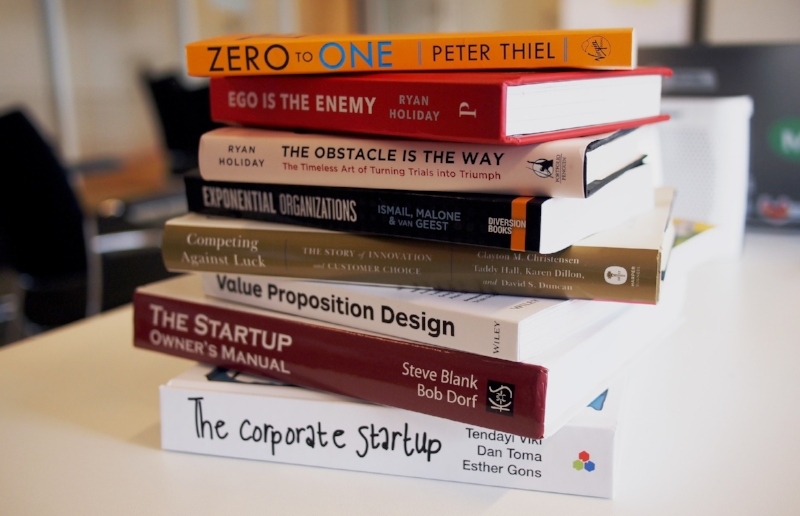“Live and learn.” It’s an expression we often hear in connection with life’s small setbacks. “I should have known better than buy a used DVD player for three dollars. Oh well, live and learn.”
Such an important insight shouldn’t be relegated solely to humble everyday uses. Consider the famous phrase Cogito Ergo Sum. Translated to mean, I think, therefore I am, this formulation by René Descartes is a pillar of modern philosophy. In simple terms, it means, “I must exist, or how else could I be having this thought?”
In its elegant simplicity, Cogito Ergo Sum solved, for most philosophers, the age-old problem of proving that we exist at all. It is interesting to juxtapose thinking and existing the other way around: I am, therefore I think. In its simplest terms, this means, “Because I live, I think.” This in turn implies the more you are thinking, the more you are living. It implies that the act of thinking makes life more meaningful.
Learning requires thinking, and at this point it is useful to take stock concerning what it will mean to learn throughout your lifetime. In your apprenticeship as a student, you are required to learn a set of material that others have defined for you. As a professional, the nature of your work determines what you need to learn at any given time.
Thinking, learning, even studying should not be limited to what you are required to learn. It’s possibly just as important to study what you want to learn—for fun, for personal development or to be social, whatever your reason. No worries, because there is always the opportunity to be a lifelong learner. Not only that, the secret, in the view of many, is simple, and can be expressed in one single word: READ.
When you read, regardless of what you are reading, you and your brain are in charge. You are controlling the pace. You are interacting with the ideas. Although you can learn from a video or a conversation, reading gives you active control of how you digest ideas.
A case can be made that reading is not just important for you, it is important for society and civilization as a whole. As immortalized in Ray Bradbury’s Fahrenheit 451, the story of a book-torching fireman enforcing a law banning books, book burning has been a tactic of oppression used, in modern times, by Nazis and the Islamic State. The burning of the great Library of Alexandria, though shrouded in mystery, has long been a symbol of the importance of great works and the cost to civilization when great works are lost.
A similar case can be made that thinking in its own right is not just important for you as a person, but for you as a citizen. In a long radio speech to the people of America, the character John Galt in Ayn Rand’s novel Atlas Shrugged says, “the choice is still open to be a human being, but the price is to start from scratch, to stand naked in the face of reality and, reversing a costly historical error, to declare: I am, therefore I'll think.”
The 1950’s vintage Atlas Shrugged is a rather dark novel. The John Galt character isn’t alluding to the joy of thinking, as we are, but rather the cultural necessity for it. You don’t have to accept the political views of Ayn Rand in order to see how the freedom and vitality of a society rests on the willingness, and the capacity, of its people to think.
Reading helps make thinking and learning happen, and if you want reading to be a major part of your lifelong learning experience, one easy way to get started is to pick a group of great books or great thinkers to master on your own. You can decide, for example, to master the key ideas in science, history, cooking, sports or whatever interest you want to pursue as a lifelong learner.
If you like fiction, you can decide to read everything by Stephen King or Shakespeare or J. K. Rowling or Toni Morrison. If you like towering scholarly works, just three by Daniel Boorstin (The Discoverers, The Creators, and The Seekers) can keep you occupied perhaps for a lifetime and, importantly, introduce you to many potential Coaches.
To find not just books but also audio and video works, browse a local library, or bookstore or an online source like Amazon.com. You can't judge a book by its cover, true, but there is no shame in pulling a book based on its cover and seeing if it appeals to you.
There are also many predefined lists. Consider this set of recommended books from criticalthinking.org. According to this source, they are the “Ten Most Read Books in the World for the Past Fifty Years.” That claim may or may not be valid by everybody’s definition, and in one sense it doesn’t matter, it is just an interesting list of books for you to choose from. Plus, many of the books are also portrayed in movies, as denoted by a check mark
√ 1. The Bible 3.9 billion copies sold. The Christian scripture consisting of the Old and New Testament.
√ 2. Quotations from the Works of Mao Tse-tung 820 million copies. Also called the Little Red Book, it explains the Chinese Communist ideology.
√ 3. Harry Potter (J. K. Rowling) 400 million copies sold. A series about the life and magical world of Harry Potter, a boy wizard.
√ 4. Lord of the Rings (J. R. R. Tolkien) 103 million copies. An ornate epic about a fantasy Middle Earth, the One Ring, and good versus evil.
√ 5. The Alchemist (Paulo Coelho) 65 million copies. A shepherd boy wanders to Africa to find The Alchemist and the secret to a treasure.
√ 6. The Da Vinci Code (Dan Brown) 57 million copies. A religious mystery about Christ’s life and legacy, set in modern Paris.
7. Twilight—The Saga (Stephanie Meyer) 43 million copies read. A love story between Bella Swan and Edward Cullen, a centuries old immortal vampire.
√ 8. Gone with the Wind (Margaret Mitchell) 33 million copies This novel about the Civil War won the Pulitzer Prize and the film adaptation won an Oscar.
9. Think and Grow Rich (Napoleon Hill) 30 million copies. A 1937 classic drawing on success formulas of Henry Ford, Alexander Graham Bell, Thomas Edison, Theodore Roosevelt, Wilbur Wright, and others.
√ 10. Diary of a Young Girl (Anne Frank) 27 million copies. A girl’s account of the Nazi occupation of Holland.
This particular list is one of many possible foundations for a self-selected “syllabus” of ideas and stories to explore as a lifelong learner. One nice thing about this list is that, in many cases, you can watch the movie as well as read the book.
Although reading is a wonderful thing, the 21st century is a multi-media era with many other assets aside from the written word. The value of the cinema as a learning venue cannot be ignored. Just as there are “top” book lists, there are top movie lists. For example, rottentomatoes.com offers the “Top 100 movies ever according to their Tomatometer Score.” The score is “Based on the published opinions of hundreds of film and television critics, a trusted measurement of movie and TV programming quality for millions of moviegoers.”
As always, it is up to you to decide the validity of the claim. What’s important, though, is that it is a list, a somewhat unusual one at that, to get you started. Here is their top 10:
1. The Wizard of Oz (1939)
2. The Third Man (1949)
3. Citizen Kane (1941)
4. All About Eve (1950)
5. The Cabinet of Dr. Caligari (1920)
6. A Hard Day's Night (1964)
7. Modern Times (1936)
8. The Godfather (1972)
9. E.T. The Extra-Terrestrial (1982)
10. Metropolis (1927)
You may also want to learn by experiencing places and events. Bucketlist.org offers many interesting ideas for lifelong learning, as does Patricia Schultz’s book 1,000 Places to See Before You Die: A Traveler's Life List. Why start a bucket list late in life like the Morgan Freeman and Jack Nicholson characters in The Bucket List? Start it and pursue it now.
Just as professors create a syllabus guides for a course, you can create one for your life, following it and keeping it updated as your tastes and interests change.



